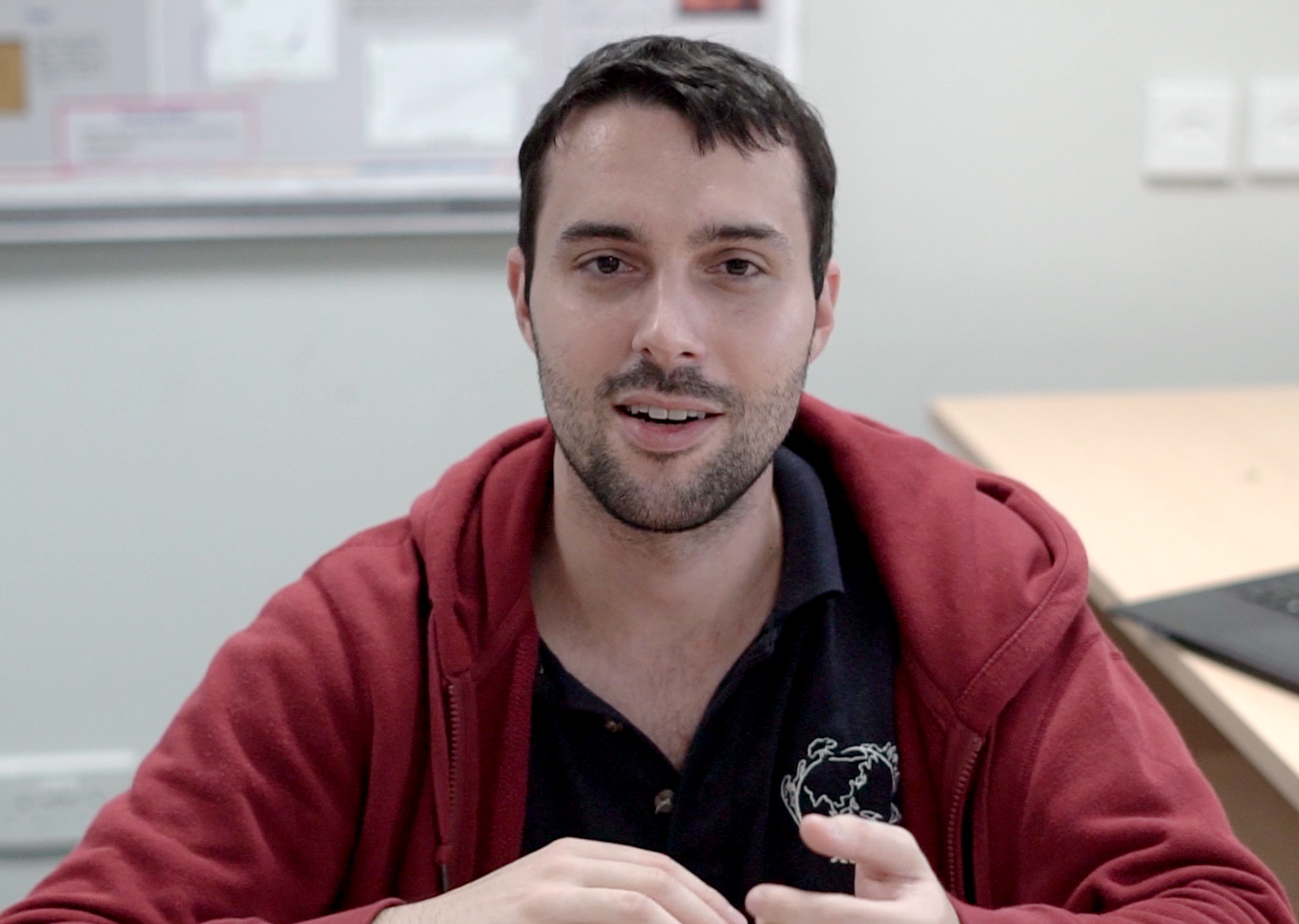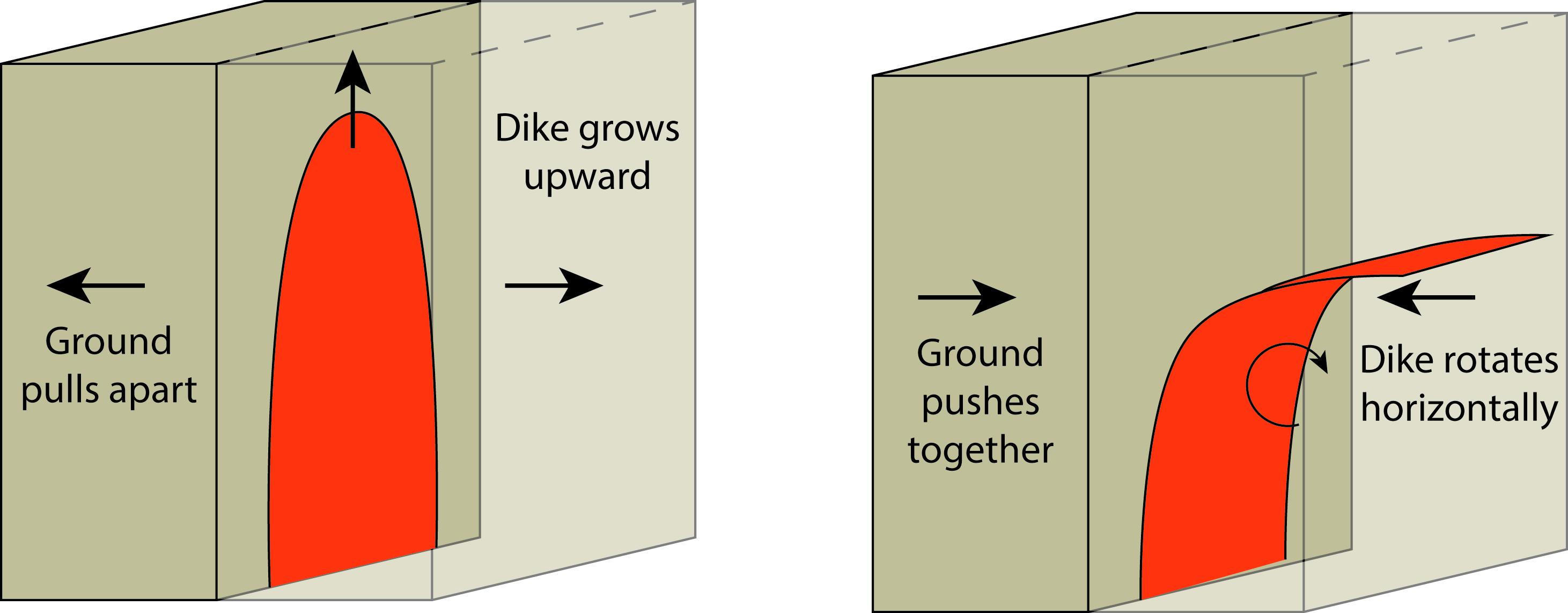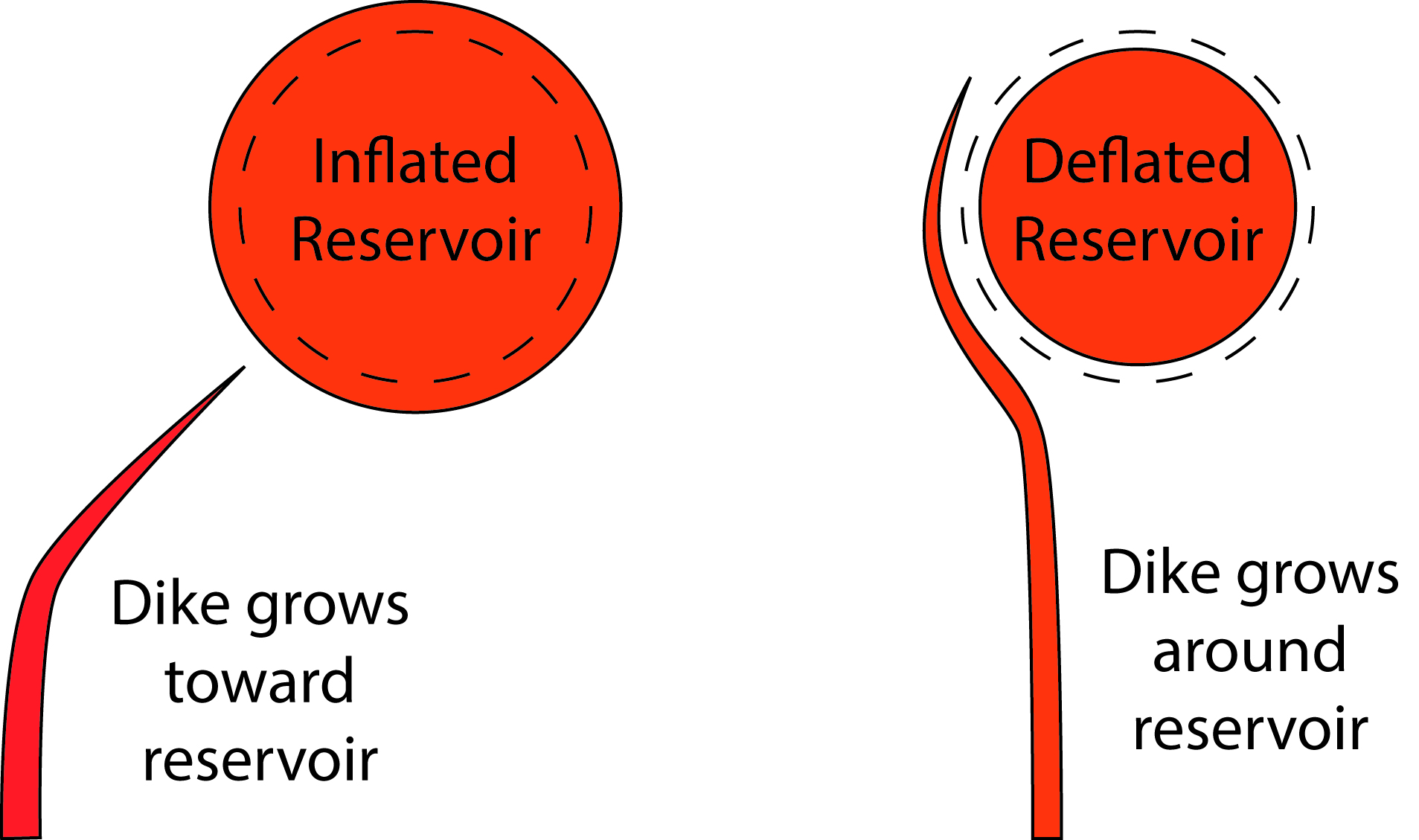
Magma commonly moves up towards the surface by creating cracks in the crust. It flows inside of the cracks, which grow upwards as the magma applies pressure and damages surrounding rocks. These magma-filled cracks are known as dikes and they are an important form which allows magma to travel easily through the crust.
Nature always finds the easiest path for a dike, so if it takes less pressure to push apart the ground vertically or horizontally, the dike will grow accordingly. This is an important principle that cracks grow perpendicularly to the weakest force and generally in the direction of the highest.
Imagine tearing apart a piece of paper – pulling the paper apart from left to right causes the paper to tear up and down. The same applies for magma breaking the crust: in a setting where the land is pulling apart horizontally, like Iceland, the magma can easily push apart the land and the dike therefore grows vertically.
 As a dike makes its way to the surface, it may encounter local stress variations, which changes how it grows. For example, below a volcano, there is usually an underground reservoir of magma, which can inflate or deflate. If such a region is highly pressurised, then nearby dikes will "feel" the change in their surrounding conditions and react by growing in a different direction. This makes it look like they are growing towards the magma reservoir. If the reservoir deflates, it makes it look like the dikes grow around the reservoir.
As a dike makes its way to the surface, it may encounter local stress variations, which changes how it grows. For example, below a volcano, there is usually an underground reservoir of magma, which can inflate or deflate. If such a region is highly pressurised, then nearby dikes will "feel" the change in their surrounding conditions and react by growing in a different direction. This makes it look like they are growing towards the magma reservoir. If the reservoir deflates, it makes it look like the dikes grow around the reservoir.

Assistant Professor Benoit Taisne and I studied this behaviour using scaled model experiments in our lab. We used different types of materials to represent nature, such as gelatin as rock and oil as magma. When oil (or any liquid) is injected into gelatin, it cracks and makes a sheet of liquid, which then grows as more is injected. We embedded a balloon in the gelatin to be the model reservoir, which we inflated and deflated using a tube, to apply pressure to the gelatin. With this model, we were able to show how these dikes change shape and grow in different directions for different reservoir pressures.
Relating our findings to volcanoes, we found that after a large eruption, which deflates the magma reservoir, dikes are more likely to grow away from the volcano. Since dikes cause eruptions when they reach the surface, this means that a future eruption is more likely to occur on the side of the volcano, rather than at the summit. This is very important for understanding where on a volcano an eruption could occur.
This research paper was published in JGR: Solid Earth on 20 December 2018. The research is supported by the National Research Foundation Singapore (award NRF2015‐NRF‐ISF001‐2437) and the Singapore Ministry of Education under the Research Centres of Excellence initiative. It has also been partly funded by the Dr. Stephen Riady Geoscience Scholars Fund.